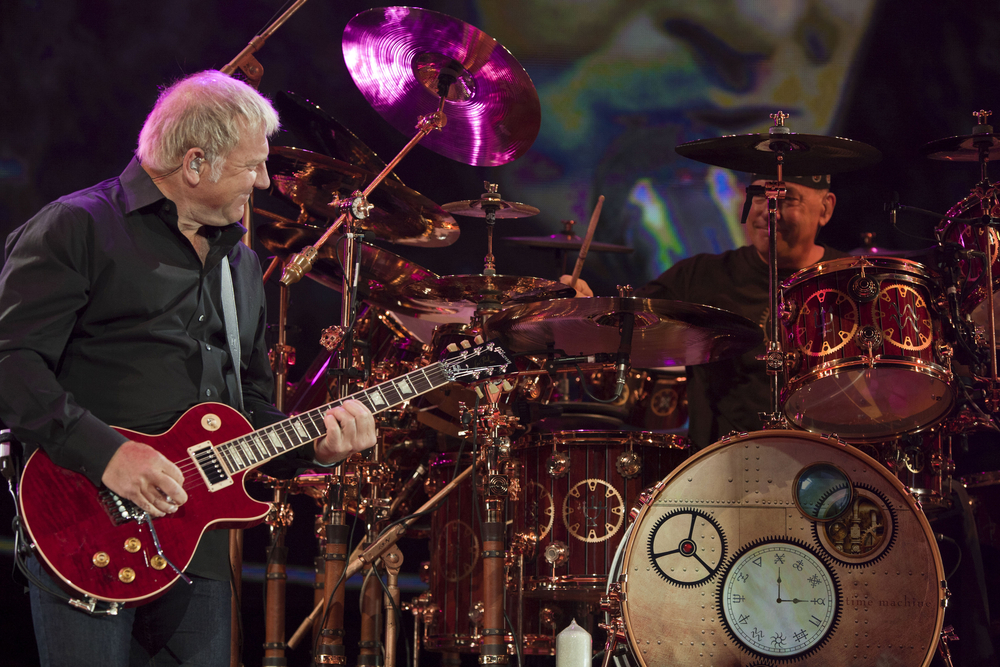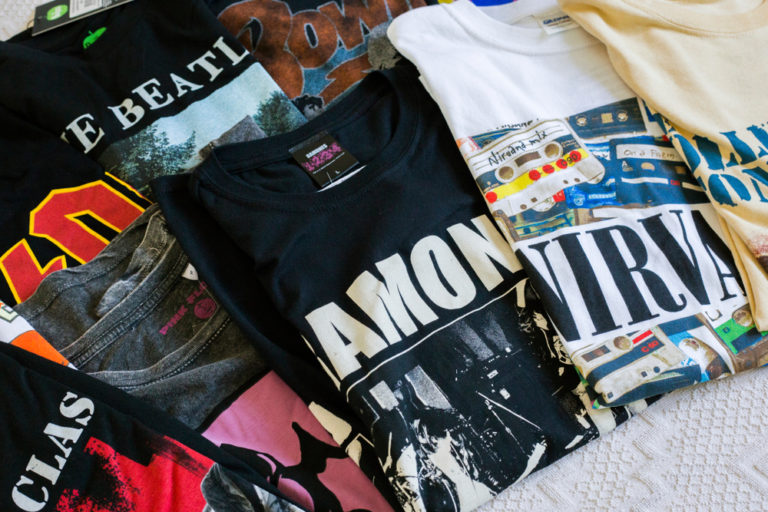How To Get into Progressive Rock: A 5-Step Process
Ok, scenario: you want to impress your crush – a big progressive rock fan – on your next date by finding some common ground in music tastes. You selected a few random songs on YouTube, but no matter what track you choose, you just can’t get into it. So, is there some way to appreciate prog rock music?
To get into progressive rock, you will – at least – need some admiration for complicated compositions, drawn-out musical instrumentation, and poetic-like lyrics. The best way to appreciate progressive rock is to follow a step-by-step process towards the goal and keep an open mind as you explore the genre.
So, whether you want your crush to swoon over your newfound love of prog, trying to impress your boss at the Christmas party, or just looking to expand your taste in music, there are five simple steps you can follow to get into progressive rock.
How To Get into Progressive Rock
Progressive rock unceasingly builds upon the foundation of the 1960s psychedelic rock scene. The genre is also synonymous with classical rock (not to be confused with classic rock), symphonic rock, and art rock, but most fans keep it short and sweet by referring to it as just prog or prog rock.
The concept of virtuosity, or mastery of one’s instrument, remains deeply important to progressive rock. A progressive musician has the ability to wow crowds with their amazing musical chops. Individual musicians were permitted the opportunity to solo and display their individual skills. Guitarists shredded their fret boards, keyboardists flew across the keys, and drummers changed time signatures with dizzying speed. Catchiness, danceability, and raw energy often took a back seat in progressive rock to musical virtuosity and the public demonstration of skill.
Study.com
The great thing about this genre of rock music is that it is constantly sprouting new leaves in different directions. So don’t be too disappointed when you realize that not all prog-rock bands will be to your liking; if you follow the five steps below, you’ll be closer to finding the style you enjoy best.
Step One: Get in the mood to explore something different
Have an open mind when you start your journey into classical rock. Try and tune out any reservations or bad experiences you might have had with the genre before and approach it like you would with any new venture; cautiously optimistic.
There is no doubt that you’ll come across a song, band, or artist that you dislike, and that is just fine. You don’t have to like every single track that is considered prog rock to be deemed a fan of the style.
Think about your favorite genre, band, or musician; it is highly unlikely that you’ll enjoy everything that it or they have to offer. It will always boil down to the simple fact of whether you like it or not.
So with your open-mindedness, watch the YouTube video below, where Dennis Rea (an American guitarist) gives a little background on the evolution and style of progressive rock. Rea has played in bands like LAND and Earthstar.
Step Two: Prepare yourself for the length of the songs
Usually, song length won’t be a deciding factor in loving or hating a song, but it needs some explaining in this regard. Some tracks are nearly endless; no exaggeration here.
There is even a joke that runs in the lines of “How do you know a prog-rock song is finished? When you have to turn the record over.” So be prepared.
Progressive rock is big on instruments in all shapes and forms; we’re talking electronics, keyboards, xylophones, guitars, saxophones, drums, trumpets, violins, vocals, cellos, etc. If it can make a sound, they’ll use it.
The complex and prolonged compositions include many solo sections throughout a single track to showcase individual instrumental talents.
Just to give you an idea, you can easily spend an entire hour listening to only two songs. Take Jethro Hall’s Thick as a Brick as an example; the song continues for nearly 44 minutes! Or Mountain Jam, performed by The Allman Brothers Band that runs for almost 34 minutes.
But rest assured, not all prog-rock songs carry these impressive times; some are in the normal range of around four to six minutes a track.
Now that you have some idea of what you might be getting into, we can progress (see what I did there?) to the next step.
Step Three: Start with the “Big Five” of progressive rock
For the best possible introduction to the bands, consider listening to their top three songs first and then moving on to the entire album. This will give you an idea of what they can offer without committing to the album from the get-go.
Genesis
Genesis was formed in England in 1967 by Peter Gabriel, Tony Banks, Anthony Phillips, Mike Rutherford, and Chris Steward.
The band is categorized under progressive rock, art rock, pop-rock, progressive pop, and soft rock.
In 1987, the band won a Grammy Award for Best Concept Music Video (Land Of Confusion). Genesis has sold more than 150 million albums across the globe.
Top three songs
- Supper’s Ready (album Foxtrot)
- Firth Of Fifth (album Selling England By The Pound)
- The Knife (album Trespass)
Yes
The progressive rock band was formed in 1968 in England by Chris Squire, John Anderson, and Bill Bruford; however, none of the original founders are still in the band.
In 1984, Yes won a Grammy Award for Best Rock Instrumental Performance (Cinema). The band was a huge commercial success, selling more than 13 million albums worldwide.
Top three songs
- (album Close To The Edge)
- And You And I (album Close To The Edge)
- Heart Of The Sunrise (album Fragile)
King Crimson
King Crimson was formed in 1968 in England by Micheal and Peter Giles, who was later joined by Robert Fripp, Ian McDonald, and Peter Sinfield.
The band is listed under progressive rock, art rock, and post-progressive.
King Crimson was nominated for two Grammy Awards in 1982 and 1995 for Best Rock Instrumental Performance. Even with a lack of wins, the band is still very popular with prog fans.
Top three songs
- Starless (album The Road to Red)
- Asbury Park (album USA)
- Larks’ Tongues In Aspic Part I (album Larks’ Tongues in Aspic)
Rush

Rush was formed in Canada in 1968 by Alex Lifeson, Jeff Jones, and John Rutsey. The band is categorized under progressive rock, hard rock, and heavy metal.
Though nominated seven times for a Grammy Award, they haven’t swept one up yet; however, Rush was still a major hit selling more than 40 million albums worldwide.
Top three songs
- Spirit of The Radio
- Tom Sawyer
- Closer To The Heart
Pink Floyd
Pink Floyd was formed in England in 1964 by Roger Waters and Nick Mason; Richard Right and Bob Klose later joined them.
The band is listed under progressive rock, art rock, experimental rock, psychedelia, and space rock.
In 1994, the band won a Grammy Award for Best Rock Instrumental Performance (Marooned). Pink Floyd was a huge commercial success, selling more than 250 million records across the globe.
Top three songs
- Money (album The Dark Side of the Moon)
- Another Brick In The Wall (album The Wall)
- Shine On You Crazy Diamond (album Wish You Were Here)
For the sake of being sure, run a repeat
After you listened to the top three songs from each band and gave the album a good listen, you might find that you didn’t even agree with the top three songs. And that, my friend, is called progress.
Have another go at the albums; you’ll have a better appreciation by now and should be able to pinpoint which style of the progressive rock scene you enjoy most. From here, you can search for similar artists to build upon your collection.
Step Four: Have a “progressive” time
The party approach
Create a list of all the songs you liked after listening to the “Big Five” albums; even if prog is not your scene, there should be a few tracks that made your head bob with the catchy tunes.
Next, make a party playlist of your usual go-to music with your next social gathering, but add in all your favorite prog tracks, put on the shuffle, and mingle with your guests.
The laid-back setting and the general warm feeling accompanying social occasions with friends or family should provide the perfect opportunity to appreciate the music in a no-pressure environment.
Try and invite people you know are into the genre; this opens up great topics for conversation. And you never know, you might just learn of new bands or songs that you’ll love.
The concert approach
Another option you can try is to keep an eye out for local prog artists’ live performances or touring bands. Experiencing progressive rock music in a live setting can give you another perspective of how much passion goes into each piece.
As with the party approach, the atmosphere around you can significantly influence your experience. Concerts or bar bands are also a fantastic date idea (you know, for the love interest you want to impress, wink wink).
The bar approach
If there are no live bands or concerts around you, look for a pub, bar, or club that plays mostly rock music, there is no doubt that a classical rock song (or two) will make an appearance.
Invite the same people you would have for the party to come along. Alternatively, take your boss for an after-work drink or, better yet…date night!

Step Five: Find your “thing” (instruments vs. lyrics)
So we’ve dealt with the fact that some of the songs are stretched out with instrumental solos. To some fans, the drawn-out melodies are precisely what they’re after, and to others, it is just too much commitment for a single track.
If you are into classical music like Debussy or Ravel, which has very little to no vocal aspects, you’ll probably enjoy the longer pieces more.
On the other hand, if you are like many people who enjoy looking up song lyrics, the shorter prog songs lean heavily towards poetry or storytelling. If you’re not feeling the tune, perhaps the lyrics might mean something to you.
You’ll notice in your exploration of the “Big Five” that they have a mix of shorter and longer tracks, so while you might not enjoy a specific song, there should be another song from the same band that tickles your fancy.
Explore the sub and fusion genres of classical rock
Subgenres
Some bands listed under the Canterbury scene are Soft Machine, Caravan, and National Health.
- Neo-progressive rock. Some bands listed under neo-progressive rock are Marillion, Pendragon, and Pallas.
- Rock in Opposition. Some bands listed under Rock in Opposition are Henry Crow, Universe Zero, Stormy Six, and Art Zoyd.
Fusion genres
- Avant-prog. Some bands listed under Avant-prog are Henry Crow, Thinking Plague, and Frank Zappa.
- Progressive metal. Some bands listed under progressive metal are Dream Theater, Opeth, and Fates Warning.
- Progressive folk. Some bands listed under progressive folk are Comus, Jethro Tull, and Spirogyra.
The Top Progressive Rock Songs
With your five steps completed, you might want to know what other fans regard as great prog tracks. Here are some fan picks to (hopefully) keep you hooked on progressive rock:
- In the Court of the Crimson King (10:02) by King Crimson
- Shine on You Crazy Diamond (13:22) by Pink Floyd
- Close to the Edge (18:42) by Yes
- Dancing With The Moonlight (8:03) Knight by Genesis
- Metropolis Pt. 1: The Miracle and the Sleeper (9:32) by Dream Theater
- The Dark Side of the Moon (7:26) by Pink Floyd
- Tom Sawyer (4:33) by Rush
- Visions (22:27) by Haken
- Wish You Were Here (4:53) by Pink Floyd
- Aqualung (6:45) by Jethro Tull
- I Can’t Dance (4:50) by Genesis
- Blackwater Park (12:12) by Opeth
- Watcher of the Skies (7:23) by Genesis
- Thick as a Brick (6:43) by Jethro Tull
- The Light (15:25) by Spock’s Beard
- Anesthetize (17:43) by Porcupine Tree
- Owner of a Lonely Heart (6:41) by Yes
- Underture (10:09) by The Who
- Larks’ Tongues in Aspic (13:50) by King Crimson
- Tarkus (20:39) by Emerson, Lake, and Palmer
Conclusion
After you have followed the five simple steps and given the song list a fair go, you should, in the worst case, at least appreciate the diversity of progressive rock. And in the best case, found a genre you can add to your playlist.
However, if you still find yourself pulling a face at it, don’t be too hard on yourself; sometimes, it is just not meant to be. As the saying goes, variety is the spice of life, after all.
Sources
- https://www.rollingstone.com/music/music-lists/50-greatest-prog-rock-albums-of-all-time-78793/magma-mekanik-destrukti%e1%ba%81-kommandoh-1973-40124/
- https://rateyourmusic.com/discussion/music/how-do-i-get-into-prog-rock/3/
- https://www.wikihow.com/Enjoy-Progressive-Rock
- https://www.newyorker.com/magazine/2017/06/19/the-persistence-of-prog-rock
- https://www.themanual.com/culture/what-is-prog-rock/
- https://en.wikipedia.org/wiki/Progressive_rock
- https://www.rollingstone.com/music/music-lists/readers-poll-the-best-prog-rock-bands-of-all-time-17276/10-dream-theater-14591/








